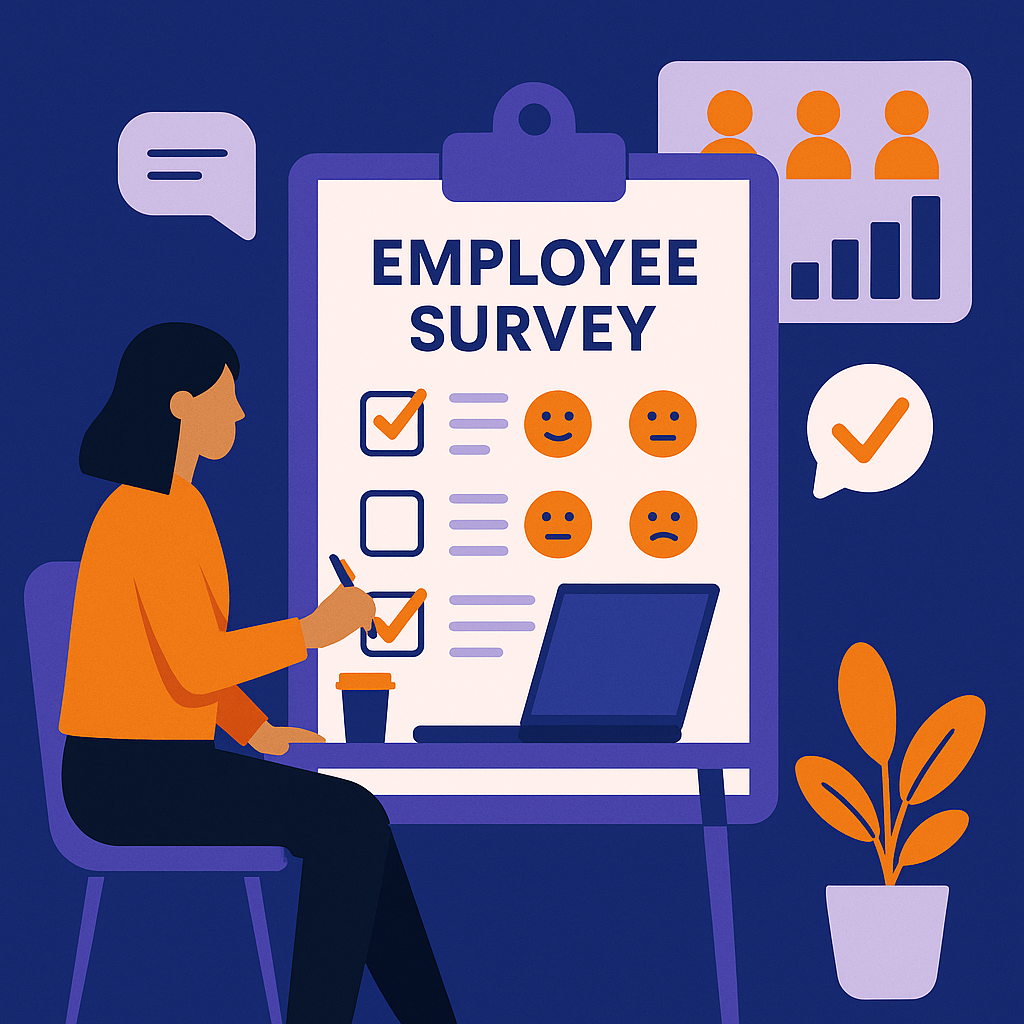Understanding what your employees truly value shouldn’t be a guessing game.
It’s the difference between a team that feels heard, valued, and invested — and one that quietly disengages over time.
That’s where employee surveys come in. Done right, they’re one of the most powerful tools HR leaders can use to shape a workplace that attracts, retains, and inspires great talent.
In this article, we’ll explore the most impactful types of employee surveys, how to design questions that generate real insight, and how to use digital platforms (like LIVD) to make feedback meaningful and actionable.
Why Employee Surveys Matter More Than Ever
Today’s workforce expects more than just a paycheck — they want a voice.
When employees are invited to share their thoughts, they’re more likely to feel engaged and loyal.
According to research from Gallup, companies that prioritize employee feedback see over 20% higher profitability and significantly stronger retention rates.
Employee surveys don’t just measure satisfaction — they uncover opportunities to improve culture, communication, and the overall employee experience. And for HR leaders, that’s essential to building a thriving, people-first workplace.
The Five Types of Employee Surveys Every HR Leader Should Know
Not all surveys are created equal. Each serves a unique purpose and can provide a different layer of insight into your organization’s health.
1. Employee Engagement Surveys
These measure motivation, connection, and alignment with your organization’s mission.
Engagement surveys help you understand whether employees feel passionate about their work — or are simply going through the motions.
2. Employee Retention Surveys
Retention surveys uncover why employees stay — and why they leave.
By identifying the drivers behind turnover (like lack of flexibility, recognition, or career growth), HR teams can proactively design programs to boost loyalty.
3. Employee Satisfaction Surveys
Satisfaction surveys evaluate overall happiness with work conditions, leadership, and benefits.
They’re particularly useful for spotting early warning signs of disengagement or burnout.
4. Pulse Surveys
Think of these as your real-time check-ins.
Short, frequent, and focused, pulse surveys help you monitor morale and engagement trends throughout the year, allowing you to take quick action when issues arise.
5. Culture Surveys
Culture surveys dig deeper into values, inclusivity, and workplace dynamics.
They help you assess whether your culture aligns with your company’s goals — and whether employees feel connected to that culture.
How to Design Employee Surveys That Inspire Honest Feedback
Great surveys are crafted with intention. They’re not about volume; they’re about clarity.
Here’s how to design questions that lead to actionable insights:
- Keep questions concise and focused. Avoid corporate jargon or multi-part questions.
- Ask open-ended questions strategically. Give employees space to share qualitative feedback, not just ratings.
- Avoid bias. Don’t frame questions in a way that nudges respondents toward a specific answer.
- Align with your goals. Every question should connect back to a business or cultural objective — from engagement to retention.
- Test your survey. Run a small pilot before launching it company-wide to ensure clarity and effectiveness.
Leveraging Technology to Streamline Surveys and Insights
The days of clunky survey spreadsheets are over.
Modern HR leaders are using digital platforms to create smarter, more personalized survey experiences — and analyze results in real time.
Platforms like LIVD help teams move beyond one-size-fits-all programs. By integrating data from lifestyle benefits, recognition programs, and employee feedback, HR leaders can see what truly drives engagement and satisfaction — and where to invest next.
With the right digital tools, you can:
- Distribute surveys instantly across teams or departments.
- Automate data analysis and visualize trends.
- Integrate results with recognition or benefit programs to take immediate action.
How to Increase Participation and Trust in Employee Surveys
Even the best survey won’t help if no one fills it out.
Here’s how to ensure high participation and authentic feedback:
- Communicate the “why.” Explain the purpose of the survey and how the results will be used.
- Ensure anonymity. Employees must feel safe to share honest feedback.
- Keep it short. Aim for 10 minutes or less — respect their time.
- Follow through. The fastest way to lose trust? Ask for input and do nothing with it.
When employees see that feedback leads to real change — such as improved benefits, career development opportunities, or recognition programs — participation and trust grow naturally.
Turning Feedback Into Action
Collecting data is only half the story — what you do with it defines your company culture.
After analyzing your survey results:
- Share key findings transparently with your teams.
- Prioritize action steps that align with your people strategy.
- Reinforce accountability by assigning ownership to specific HR or leadership roles.
- Measure impact through follow-up surveys and ongoing check-ins.
By closing the feedback loop, you reinforce that employee voices are not only heard — they shape the direction of your organization.
The Role of Lifestyle Benefits in Retention and Satisfaction
When employees tell you what they value, listen closely.
Increasingly, that feedback points to personalization — especially in benefits.
Lifestyle benefits empower employees to choose what fits their lives best, whether it’s fitness memberships, family care, wellness programs, or personal development opportunities.
With LIVD, HR leaders can offer employees a stipend-based, flexible benefit experience that aligns with their needs — a natural extension of listening and responding through surveys.
When employees feel understood and supported, retention improves, engagement deepens, and loyalty grows.
Final Thoughts: Surveys as a Strategic HR Advantage
Employee surveys aren’t just a feedback tool — they’re a strategic advantage.
They give HR leaders visibility into what drives engagement, satisfaction, and retention — while helping shape a culture where employees feel valued and heard.
By combining continuous listening with personalized benefits through platforms like LIVD, HR teams can create workplaces that don’t just retain talent — they inspire it.

